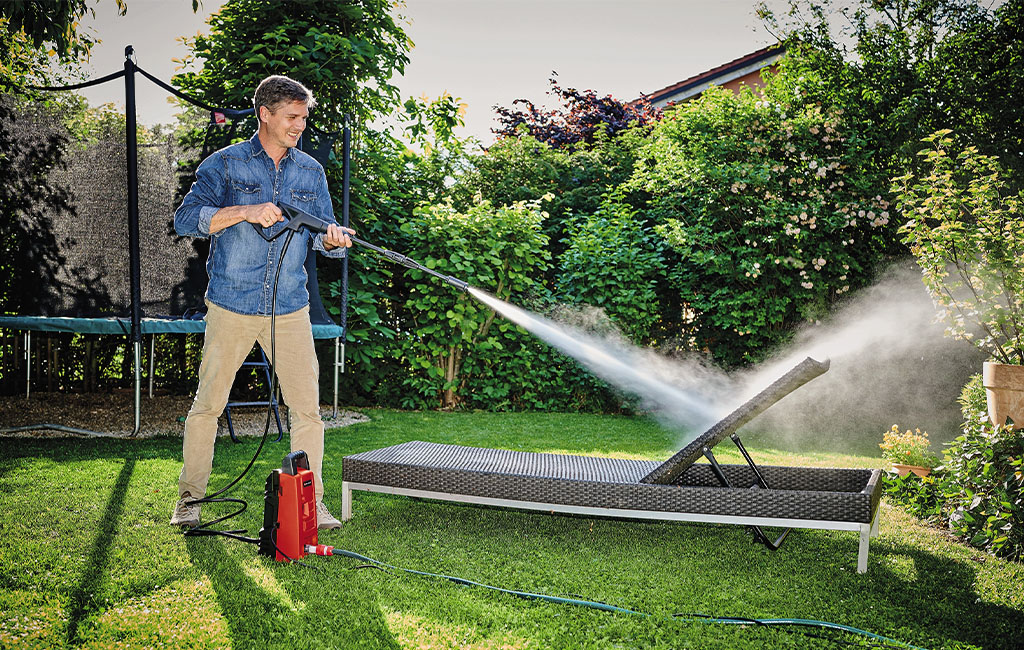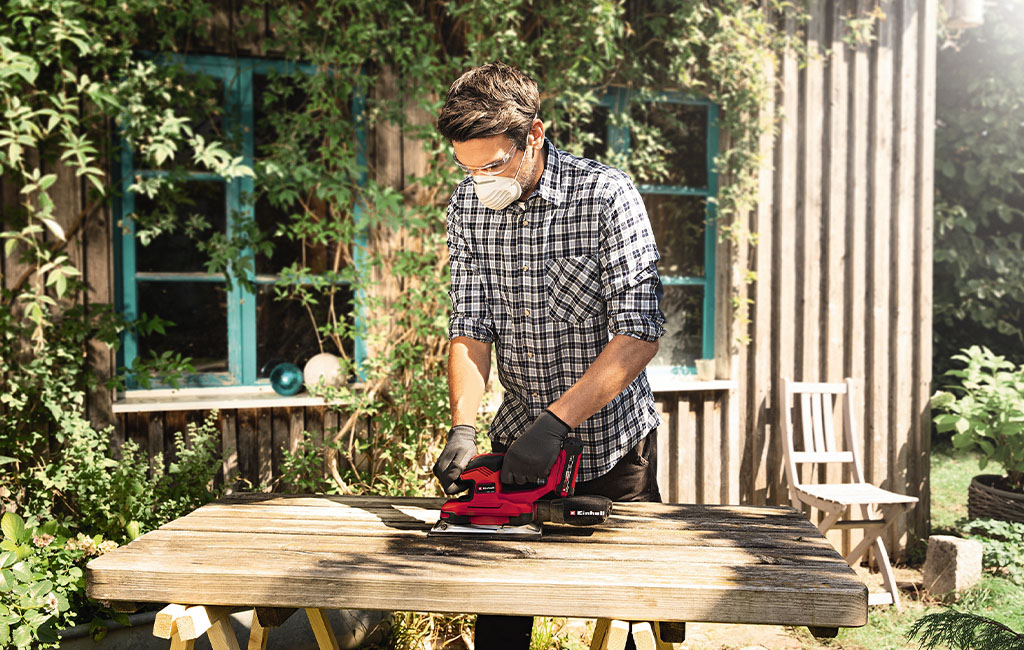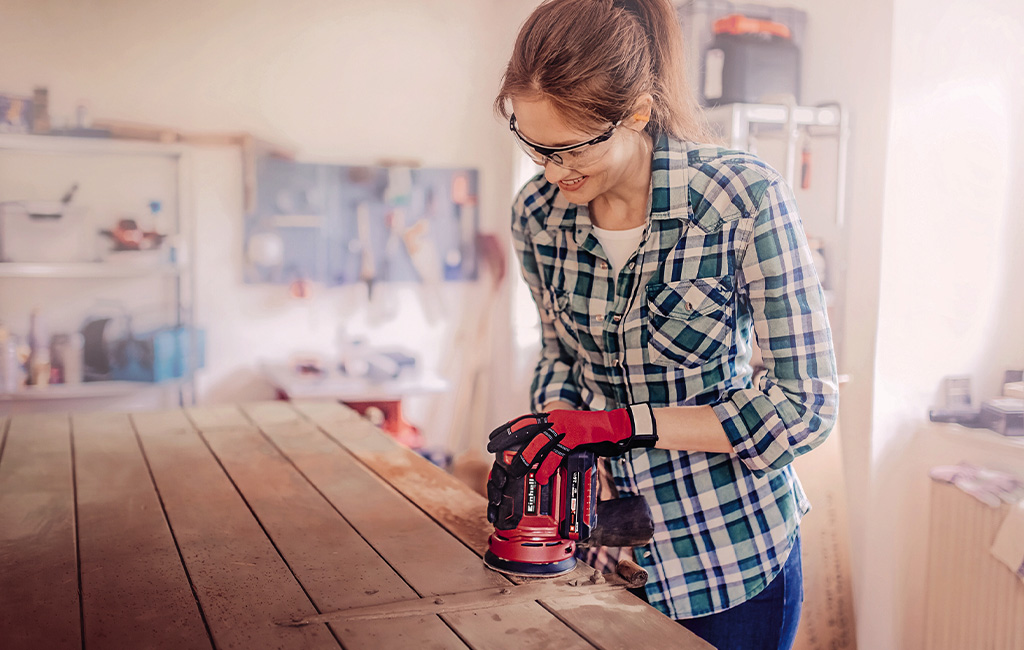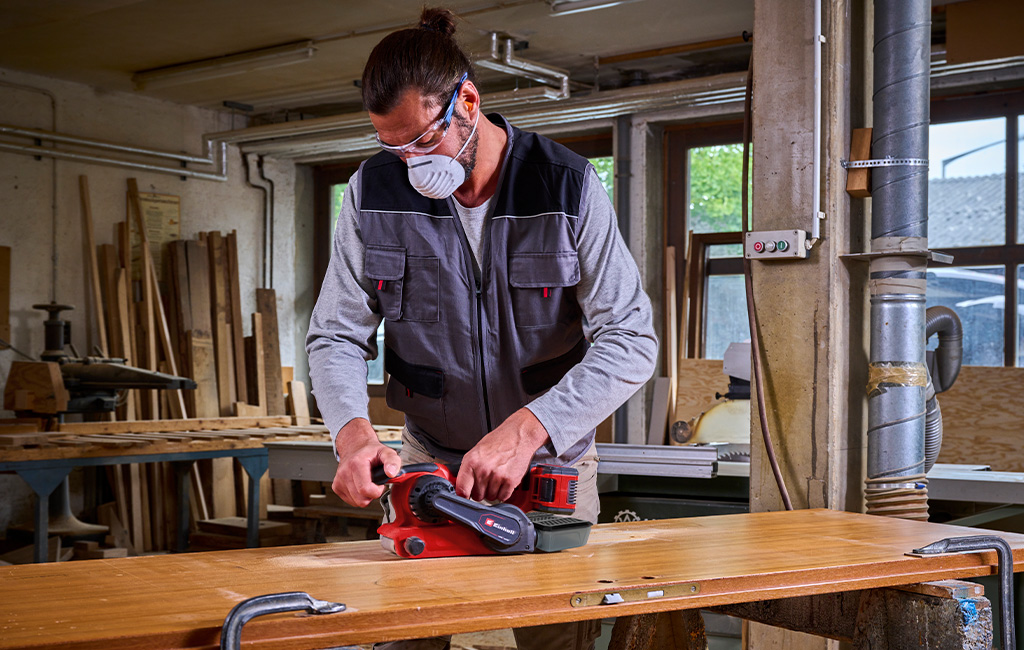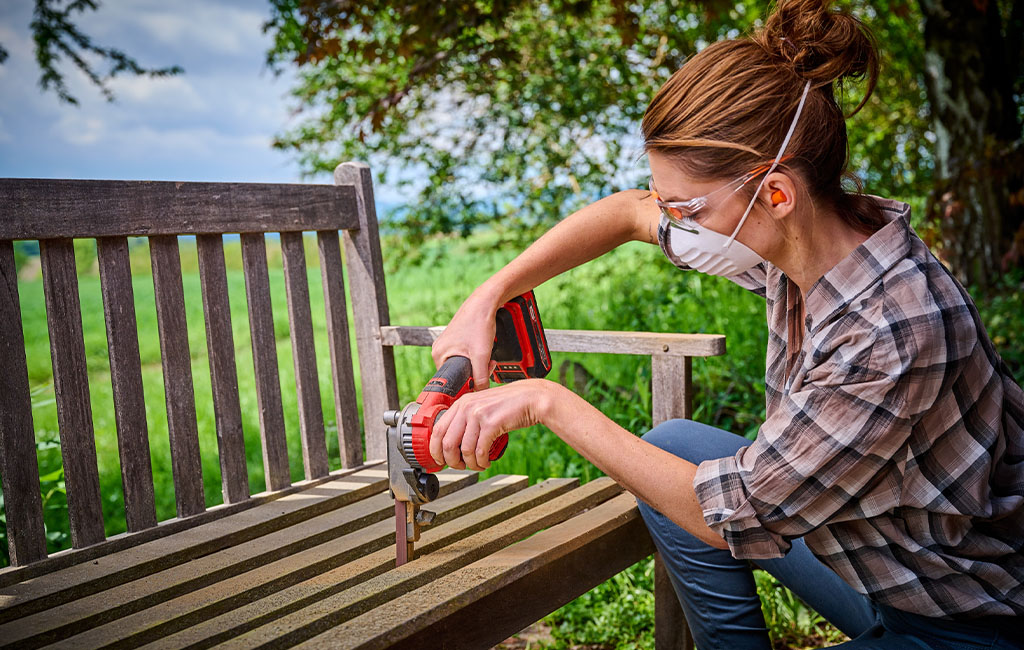Perfect start to spring: How to clean and care for your garden furniture properly
With spring just around the corner and the first warm sunrays on our faces, we are increasingly drawn outdoors. Whether it's cosily reading the latest book on a garden chair or enjoying barbecue evenings on the terrace together, to fully enjoy the fresh air, you should prepare your outdoor area and wake up your wintered furniture from their hibernation.
We will give you helpful tips on how to properly clean and maintain your wooden, metal, and other outdoor furniture, and which tools can assist you in the process!
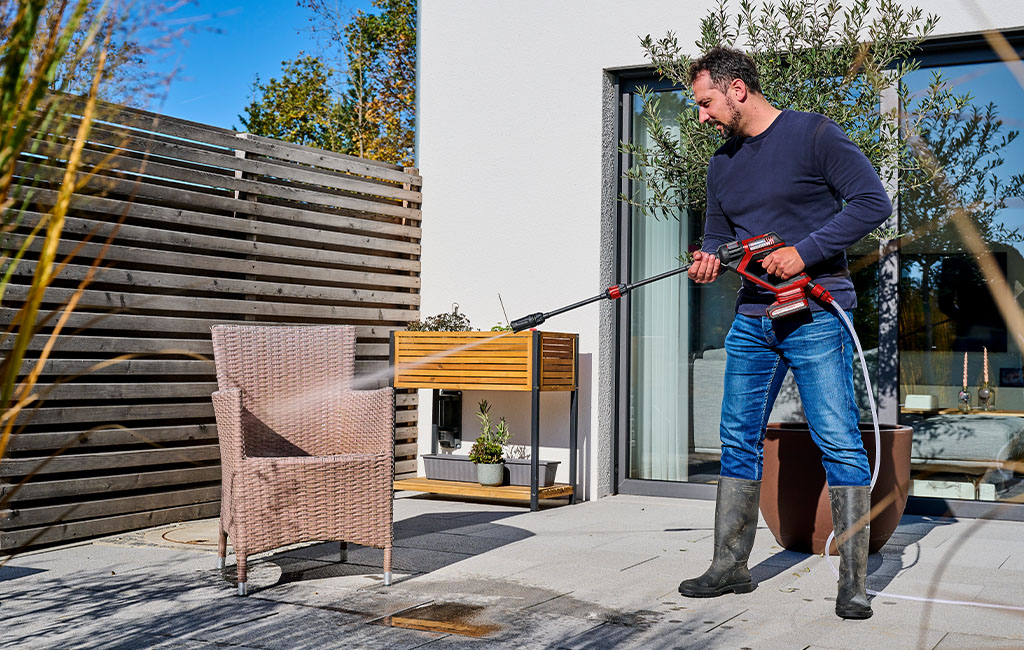
Why winter storage for garden furniture makes sense
Metal, wood, and plastic: Outdoor furniture is typically made of durable materials. No wonder, they need to withstand not only heat and UV radiation but also rain and wind. But beware: Especially moisture or snow combined with sub-zero temperatures may not be advisable for many outdoor furniture pieces. Depending on the type of wood and surface protection, your wooden furniture may swell from moisture and shrink again when frozen, leading to cracks and deformations. Moisture penetration into the wood also creates an optimal environment for bacteria, insects, fungi, and moss. Plastic furniture, for example, in rattan look, may become brittle or gradually lose their colour. Even furniture made of robust metal could be susceptible to rust or corrosion in moist conditions. This depends on whether the metal used is rust-resistant and if the coating is intact. Even the slightest damage to the protective coating can be enough to trigger rust formation.
So, it's advisable to store wooden and plastic furniture dry and protected over winter, at least securely covered. If you want to ensure the safety of your metal furniture, it's also worth overwintering them in a dry garage, shed, or basement.
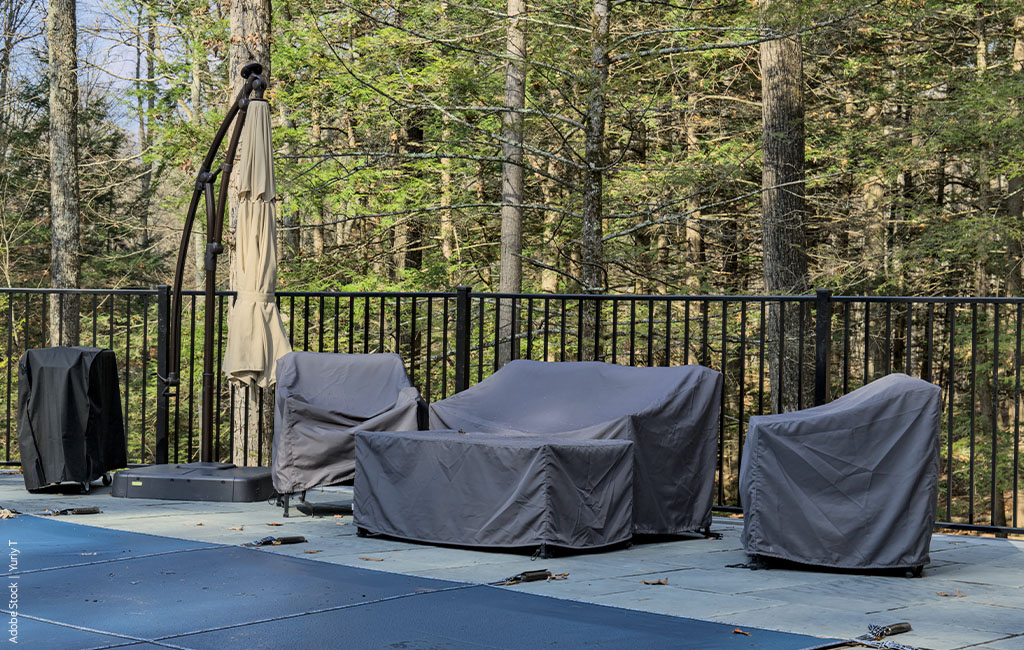
Regular cleaning of garden furniture
Because outdoor furniture is exposed to much more external influences than indoor furniture, regular cleaning is extremely important to ensure you enjoy them for a long time. For example, you should always remove bird droppings from your garden chairs and other furniture as quickly as possible so that they don't "burn in" when exposed to sunlight. In addition to regular daily cleaning, you should also clean your furniture at the beginning and end of the gardening season. This way, you store the furniture cleanly and wake them up from hibernation promptly at the start of spring.
Tips for easy cleaning of garden furniture
Pollen, dust, and other stains can usually be removed from resilient surfaces such as plastic or metal with just a sponge or cloth, some water, and possibly soap.
If you want to clean your furniture directly outdoors, always pay attention to the appropriate weather. Cleaning is best done in summery temperatures to allow the furniture to dry completely. Avoid excessive heat, UV radiation, or icy cold temperatures below 0°C. In such cases, you can clean your furniture sets in a protected space with relatively constant temperatures, such as a garage.
Practical tools for brilliantly clean results
Cordless Pressure Washer
To remove deep-seated dirt from a rattan-style garden chair, the easiest way is with the targeted use of a pressure washer gun. The cordless pressure washer HYPRESSO 18/24-1 Li can be used completely wirelessly and can draw the required water from various sources, whether from a bucket, container, pond, or conventionally via connection to a garden hose or water tap. With 24 bars of pressure, it provides enough force for cleaning without damaging the furniture.

High Pressure Cleaners
The high pressure washer is arguably the classic choice for quick and efficient cleaning of the terrace and more. Einhell high pressure cleaners tackle even the most stubborn dirt with up to 170 bars of pressure, depending on the model. Want to thoroughly clean your plastic or metal garden furniture? Then the pressure washer is your device of choice. With a wide range of accessories and the flexibility to adjust the spray jet, dust, pollen, and other dirt should quickly become a thing of the past.
Universally popular: Wooden furniture
Wood is not only popular for interior decoration; this natural material is also commonly used for a variety of garden furniture. However, without a protective coating, the material is vulnerable to UV radiation, moisture, and humidity in outdoor environments. Over time, depending on the type, wood can change in colour and structure and, in the worst case, become cracked and brittle. We'll explain how to properly care for your wooden furniture below.
Care instructions: Proper cleaning of wooden furniture
When it comes to wooden furniture, it's generally advisable to use water sparingly. Nonetheless, dirt and stains should be regularly removed. For a more thorough cleaning, which should be done once or twice a year, follow these steps:
- Depending on the type of wood, use a gentle soap solution made from natural soap or a specialized wood cleaner from a hardware store.
- Use a slightly damp cotton cloth, sponge, or gentle brush for cleaning.
- When wiping or brushing dirt and stains from the wood surface, be sure to work in the direction of the grain to avoid damaging the wood. This also applies when gently drying.
- For untreated wood surfaces, you can maintain them after cleaning with oil or a sealant. It's best to consult with a specialist to determine which specific products are best suited for your wooden furniture.
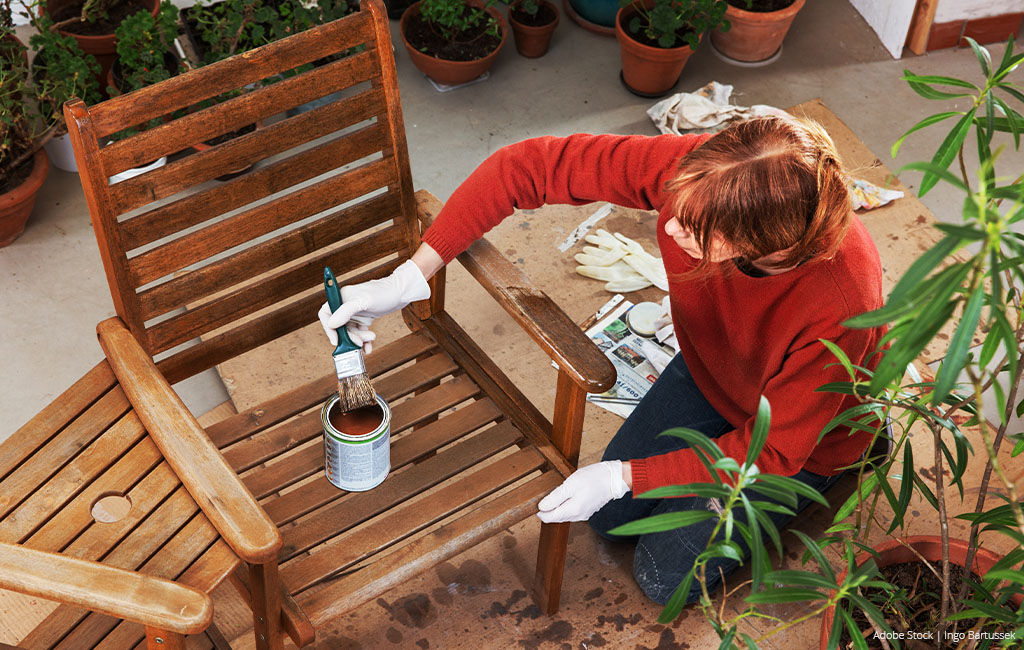
Sanding garden furniture: The right tools
If the wood is already heavily worn or has stains that cannot be removed with regular cleaning and maintenance, you still have the option of sanding your furniture. If you want to renew old, cracked paint, you must first sand it clean so that a new coat of paint can adhere evenly and neatly. Whether you want to sand by hand or use a suitable sanding machine is up to you. Especially for larger surfaces like a big table, a sanding machine can save you a lot of time. We'll show you the advantages of different sanding tools.
Orbital Sander
Is your garden table looking worn out? For sanding or roughening flat and large surfaces like tabletops, orbital sanders are very effective. For example, the Einhell cordless orbital sander TE-OS 18/230 Li is suitable. Its large, rectangular sanding plate moves in circular motions over the surface and can be guided optimally to edges and corners due to its shape. Depending on the sandpaper used, it can deliver very fine results. For corners, a multiple sander or delta sander, which work on the same principle, is also worthwhile.
Rotating Sander
For larger surfaces, especially for quick sanding with high material removal, rotating sanders are recommended. The round sanding pad not only moves in circular motions but also rotates at the same time. This allows the rotating sander to remove more material at once and can also be used for uneven surfaces. It achieves a very fine, high-quality sanding result. For example, you can go completely cordless with the Einhell cordless rotating sander TE-RS 18 Li.
Belt Sander
Removing the old paint from a wooden table? Such rough sanding tasks are best done quickly with a belt sander, which, thanks to its large sanding surface and high belt speed, can remove a lot of material quickly. Don't have the right power outlet in the garden for this? Then opt for the Einhell Professional cordless belt sander TP-BS 18/457 Li BL.
Belt File
Has your garden bench seen better days? Once properly sanded and repainted, it will look like new again. To ensure you can reach narrow spaces and all corners optimally while sanding, take a closer look at our Einhell cordless belt file TE-BF 18 Li! With two different width, interchangeable sanding arms, it's perfect for flexible use, and with the appropriate sandpaper, it can sand not only wood but also metal.
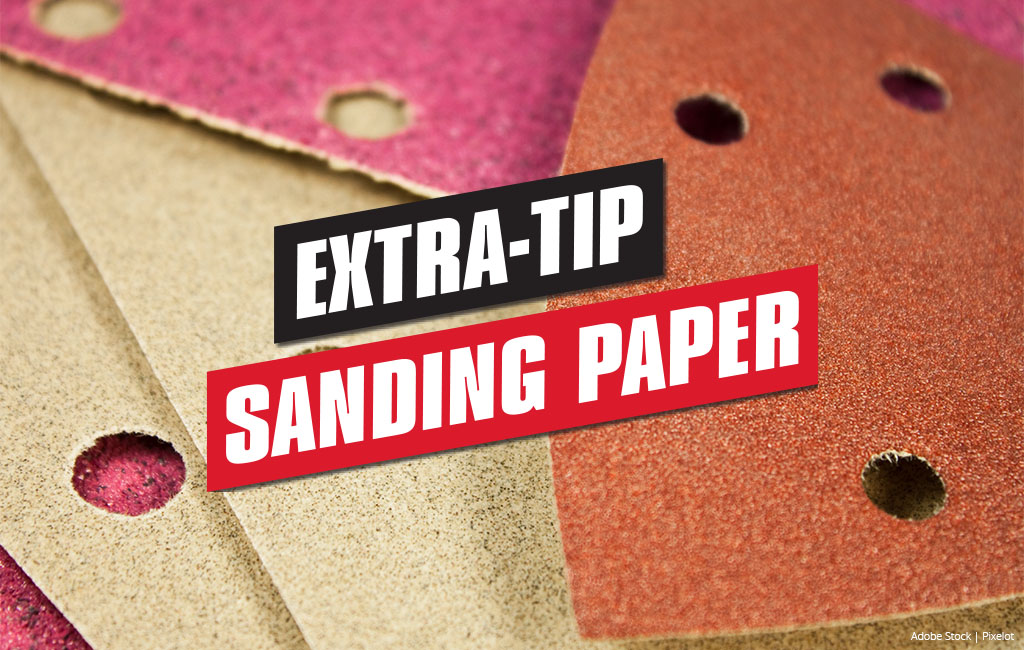
EXTRA TIP: Sandpaper Grits
Not sure which sandpaper to use? When sanding wood, use coarse sandpaper with grits between 40 and 80 to repair dents or very deep scratches. Grits from 80 to 180 are suitable for removing old paint layers and for smoothing after coarse sanding. For fine sanding, i.e., smoothing wood surfaces, use high grits starting from at least P180.





